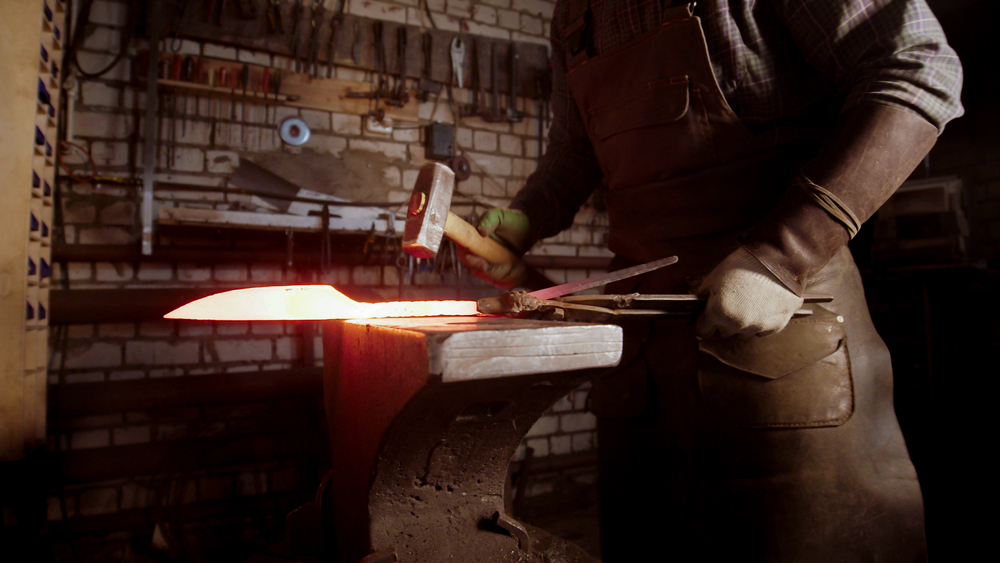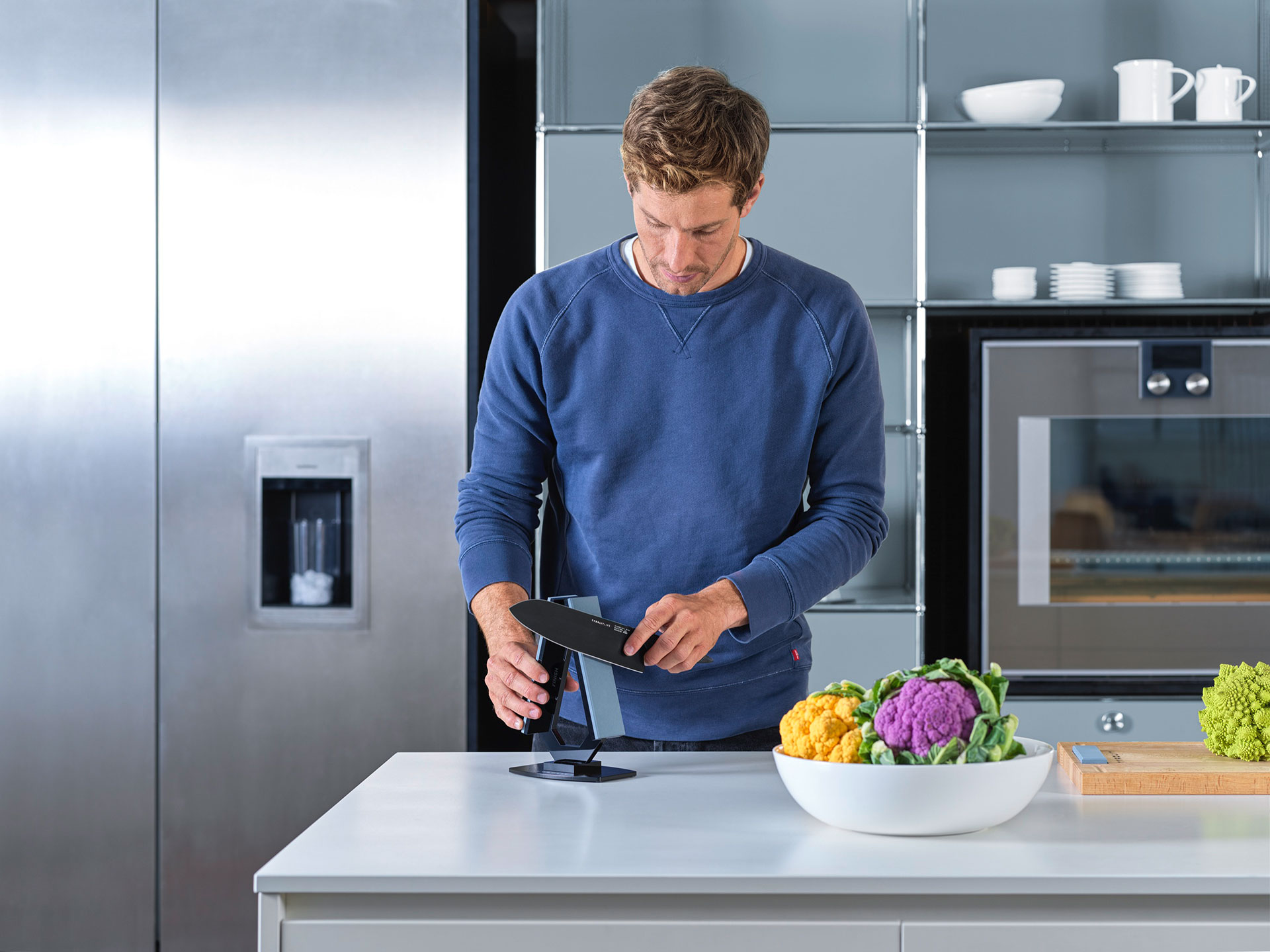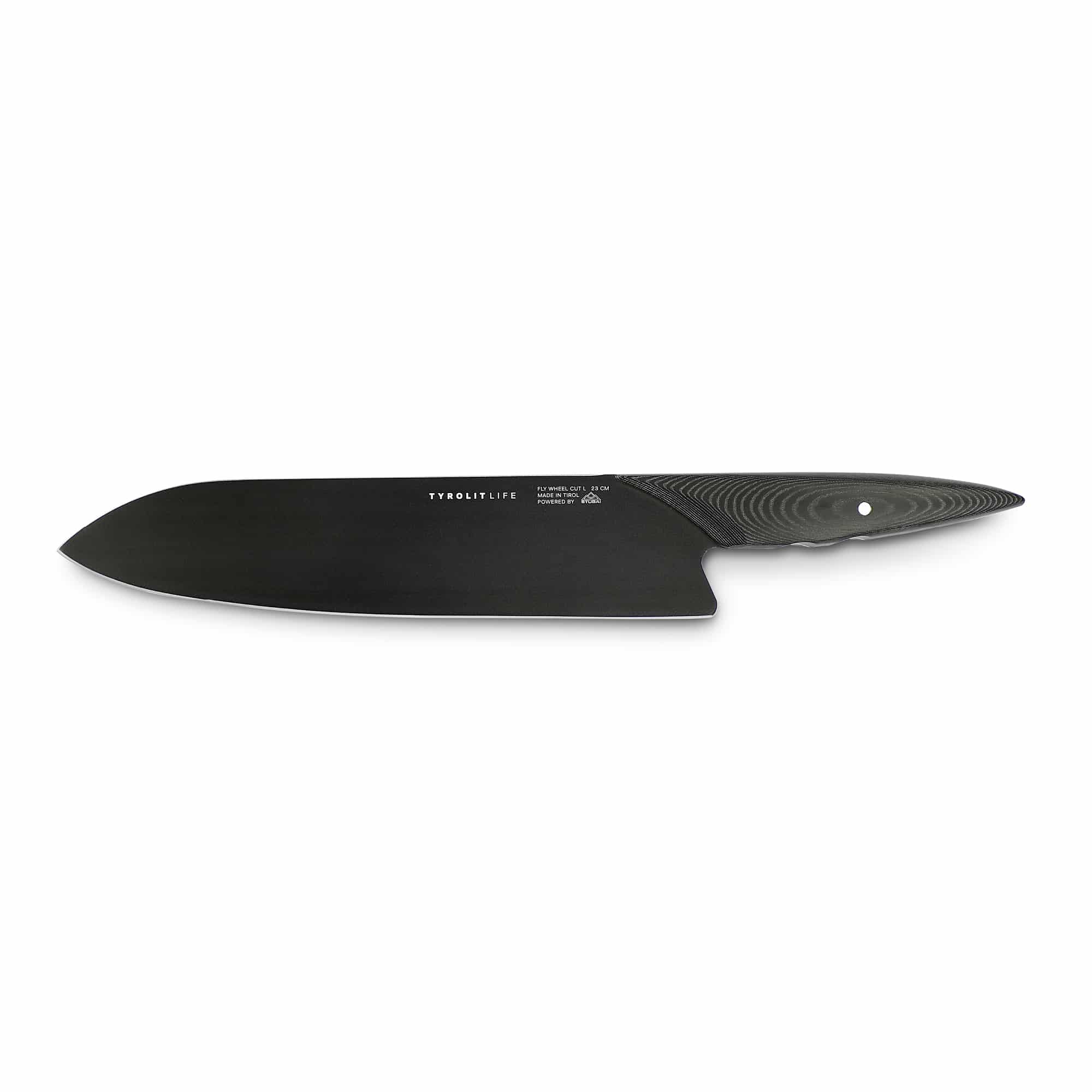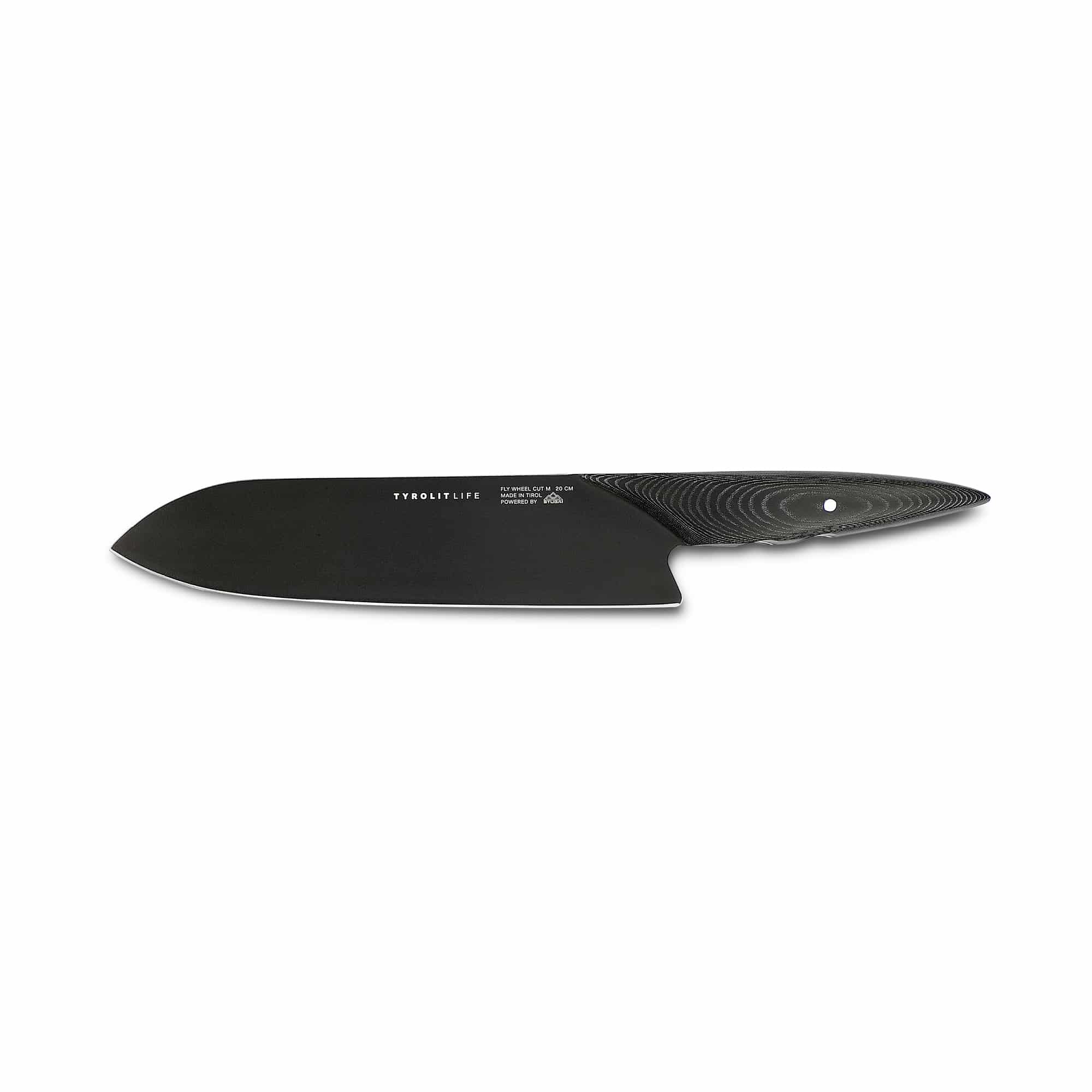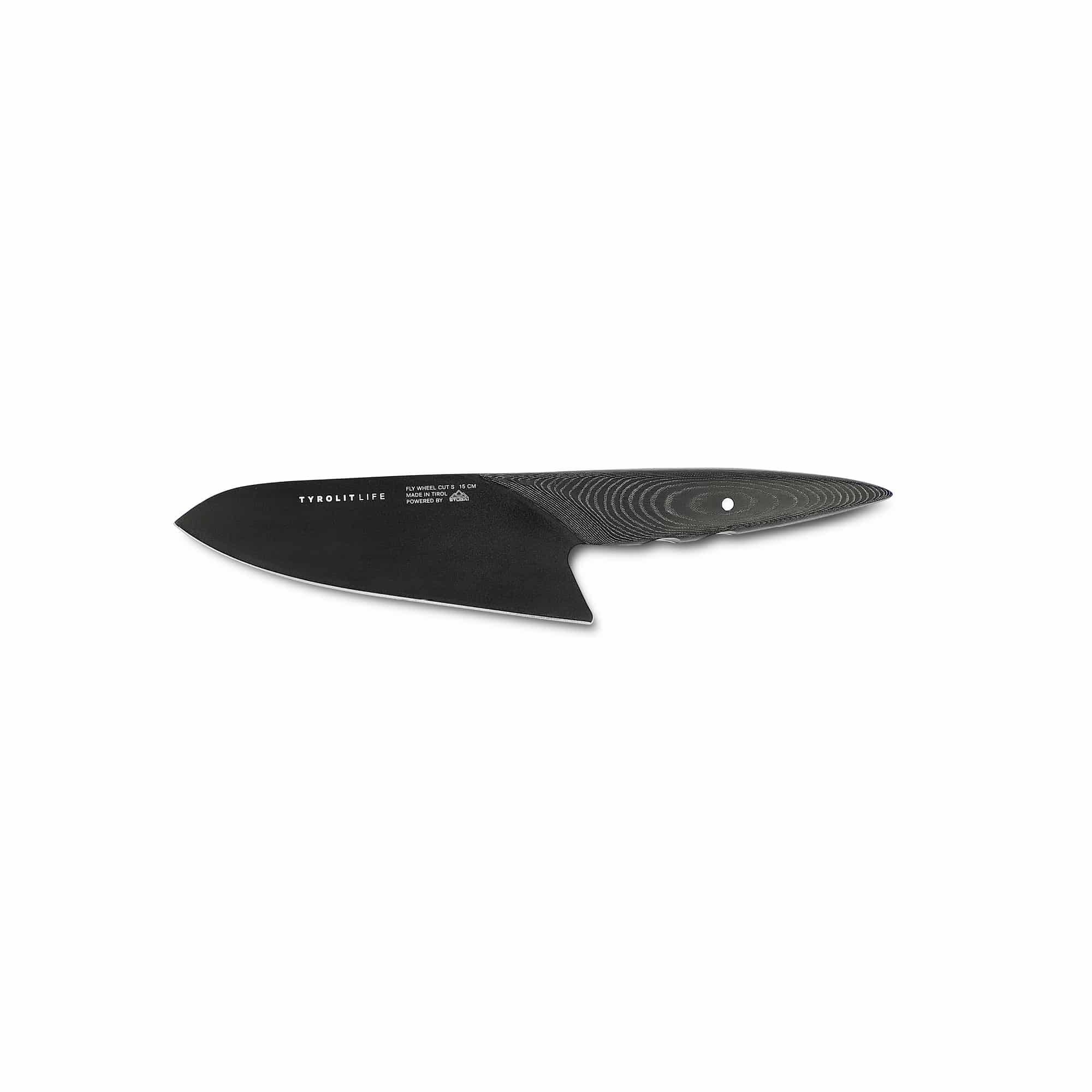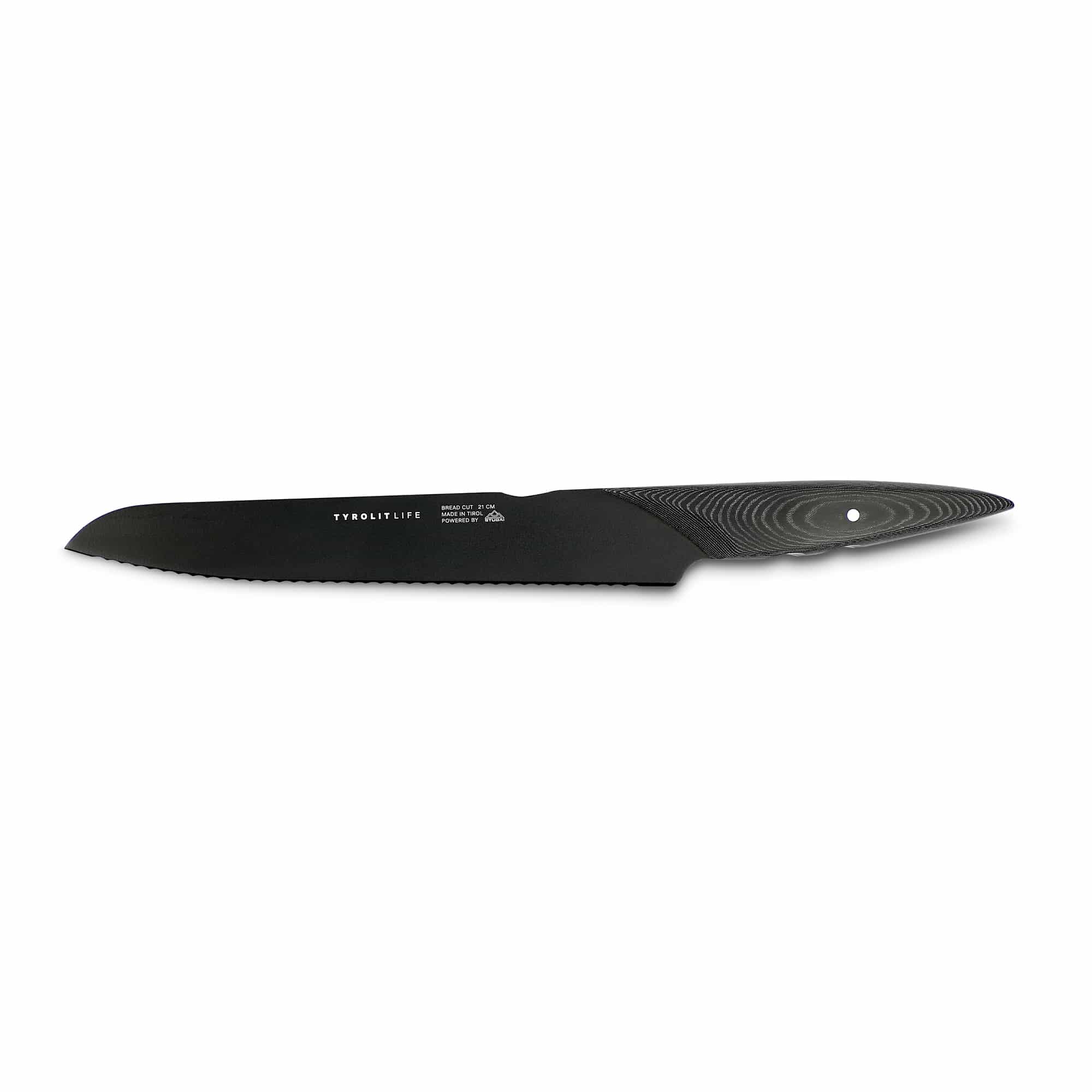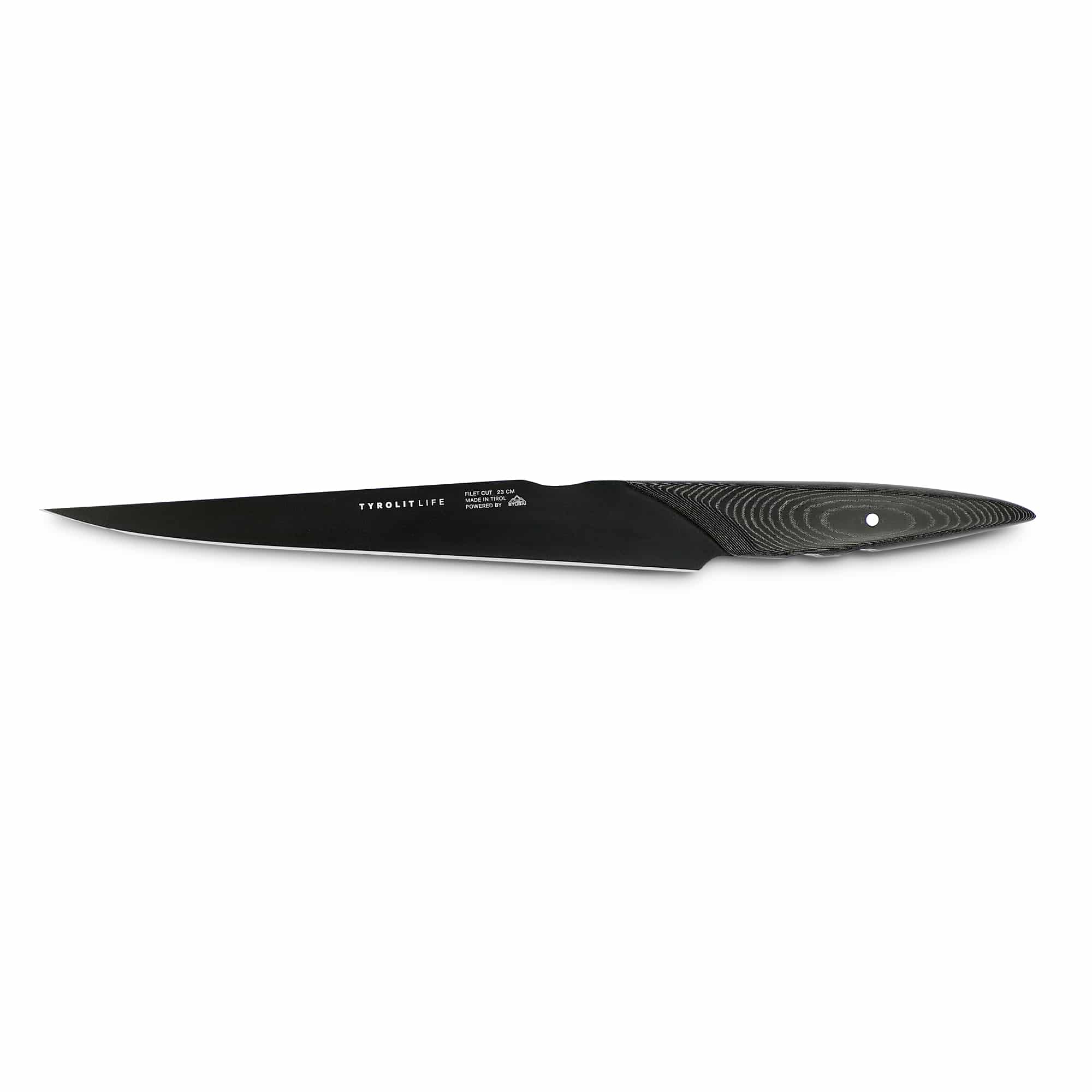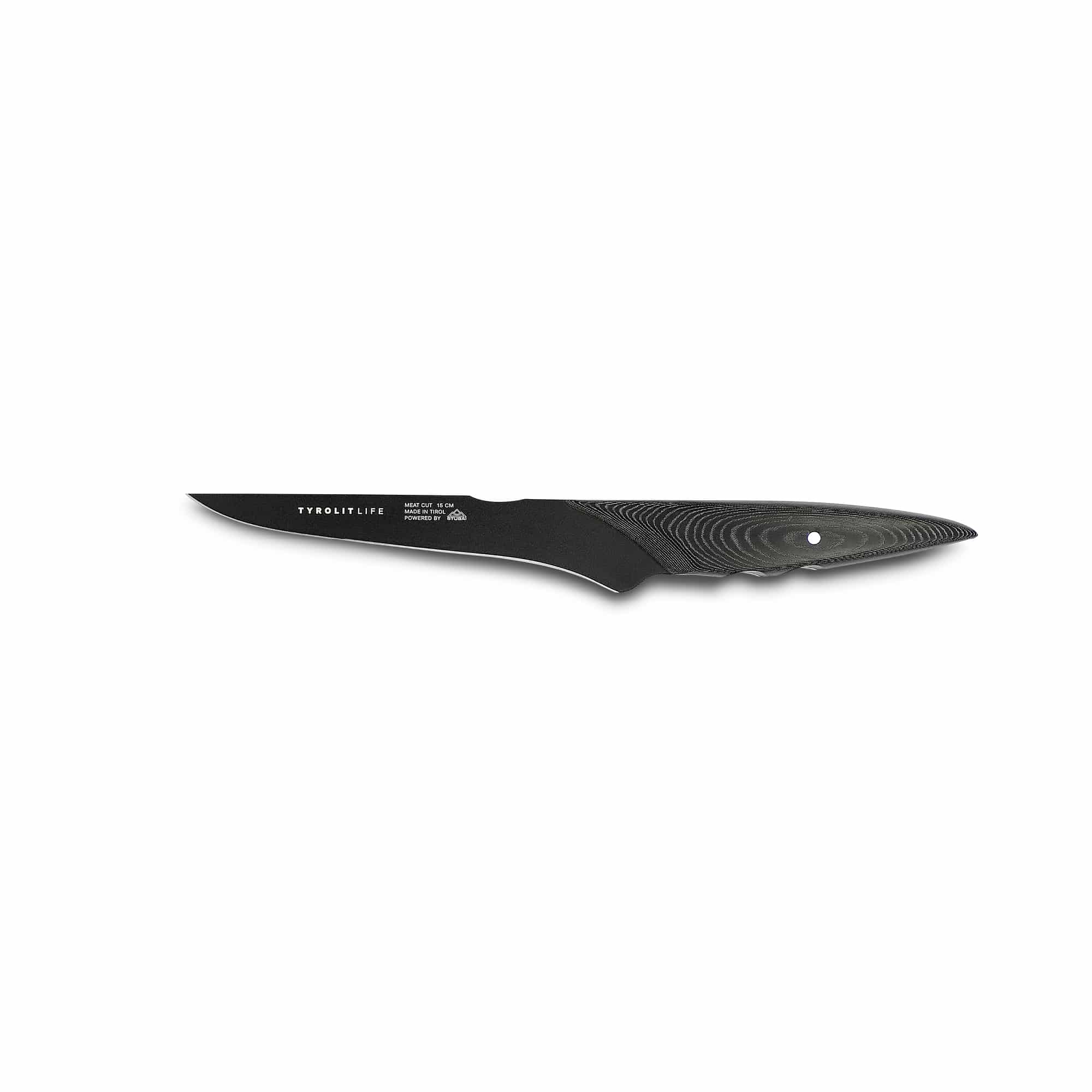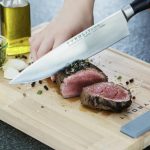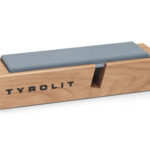ERL – what types of ERL are there?
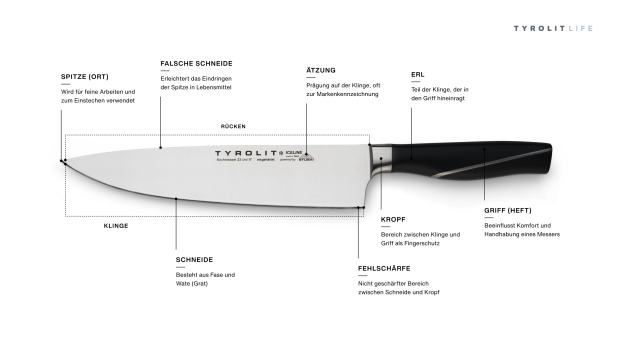
Perhaps the “Erl” brings back memories of childhood days when Goethe’s “Erlkönig” was recited in school. In fact, the Erl also plays an important role in the construction of a kitchen knife. And similar to the ballad, where the Erlkönig eludes most eyes, the Erl usually remains hidden with the knife. But what is this all about?
In this post, we will look at the different types of Erl and explain how they determine the quality and functionality of a knife. We will also discuss the basic technical terms and the structure of a knife.
What is the ERL?
The tang, also known as the tang, is the part of the blade that extends into the handle. There are different types of tangs, which can vary depending on the construction and use of the knife.
The tang plays a crucial role in the handling and functionality of the knife. A knife with a full tang, as is found in many high-quality kitchen knives, provides improved control and balance during cutting. This is particularly important for precise cutting tasks and the durability of the knife.
The History of the Knife – Weapon, Tool and Precision Instrument
Human history is closely linked to that of the knife. In this post, we look at important milestones – from the origins, to the materials used, to today’s precision tools.
Erl types at a glance
Alder – also known as fishing – comes in a wide variety of shapes and designs. The most common Erl types include:
- Full Tang
- Teilerl
- Three-Quarter Tang
- Hidden Tang
- Rat-Tail Tang
- Runderl
- Kurzerl
- Spitzerl
- Flat Tang
- Zapfenerl
We have summarized the most important features of these methods for you here:
Full Tang: The Full Tang extends across the entire length and width of the handle. This construction provides maximum stability and even weight distribution, which is especially characteristic of high-quality kitchen and outdoor knives. A Full Tang ensures a robust and durable connection between the blade and handle.
Partial Tang (Teilerl): The partial tang extends only partly into the handle, often up to halfway or less. This construction makes the knife lighter and easier to manage, but at the cost of stability. Partial tangs are commonly found in lighter and more affordable knives.
Three-quarter tang: The three-quarter tang extends about three-quarters of the way into the handle and offers a good balance between weight and stability. This design is ideal for knives that need to be sturdy but still handy.
Hidden Tang: The hidden tang is completely enclosed by the handle material and is not visible. This construction allows for aesthetically pleasing handles while still ensuring good stability. Hidden tangs are commonly found in traditional and decorative knives, as well as in high-quality kitchen knives.
Rat-Tail Tang: The Rat-Tail Tang, also known as Rat Tail, is a narrow, often rounded tang that tapers towards the tip. This construction makes the knife lightweight and easy to handle, but less stable.
Round tang: As the name suggests, the round tang has a round shape and extends through the entire handle. This design offers a good balance and is often found in knives with special handle designs.
Short Tang (Kurzerl): The Short Tang only extends a short distance into the handle. This construction is common in less expensive knives and provides less stability than longer tangs.
Tapered Tang (Spitzerl): The tapered tang narrows towards the tip, providing a good balance between weight and stability. This construction is frequently employed in knives that require control and precision.
Flat tang: The flat tang is flat and wide, which gives it good stability and weight distribution. This type of Erl is often found in high quality kitchen knives and offers excellent balance and handling.
Stub Tang: The Stub Tang is a short, thick tang that is anchored in the handle. This design provides a solid connection and is often found in traditional European knives.
Kitchen knives – The best tips and information
Whether beginner, amateur or professional chef – a high-quality kitchen knife is the heart of every kitchen. Because what can be more discouraging than having to work with a blunt knife every day? A sharp kitchen knife, on the other hand, is a real pleasure. Find out more!
Other technical terms – Structure of a knife
Of course, the knife does not consist of the tang alone. Rather, there are a number of parts of a knife that are common to most knife types. However, the technical terms for these components are often no longer common today, which is due, among other things, to the long tradition of knife making. That is why we take a closer look at the most important technical terms related to knives here.
Components of the knife
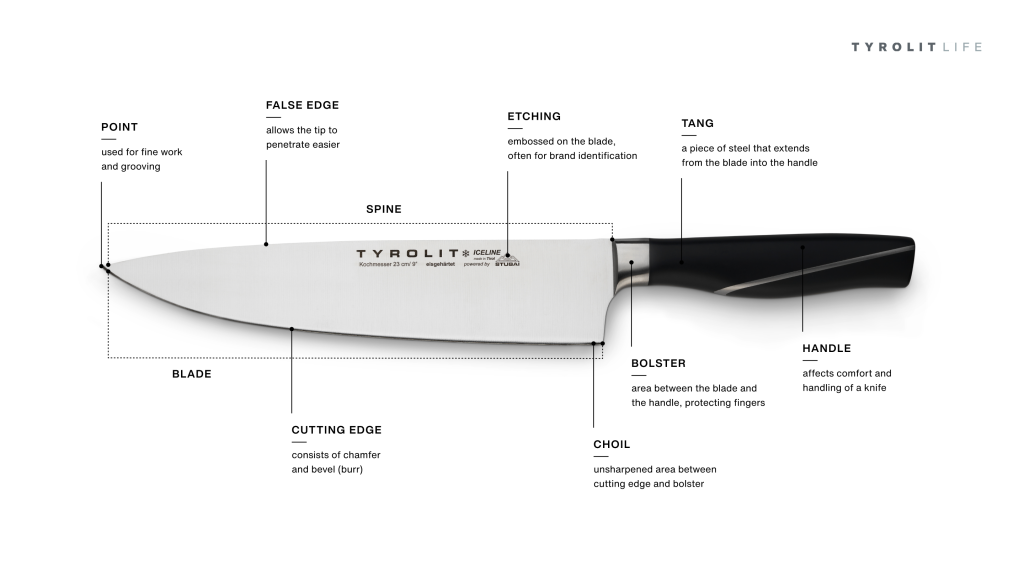
A knife consists of several essential parts that only result in a high-quality cutting tool in their entirety. The most important parts of the knife include:
- Tip or Point: the foremost part of the blade, used for fine tasks and piercing
- False Edge: a beveled or partially sharpened surface on the back of the blade, usually near the tip
- Blade: the central part of the knife responsible for cutting
- Cutting edge: the sharp edge of the blade that makes the cut
- Bevel: the angled area of the cutting edge that determines the sharpening angle
- Wate or burr: the fine edge that forms on the edge of a knife
- Back: the blunt top edge of the blade that provides stability and balance
- Etching: a decorative or informative embossing on the blade
- False Edge: the unsharpened area between the blade and the bolster
- Bolster: the thickened area between the blade and the handle that serves as finger protection
- Erl: the part of the blade that protrudes into the handle and affects stability and balance
- Handle: the part of the knife that is held, made from materials such as wood, plastic, metal, or Micarta
Common blade shapes
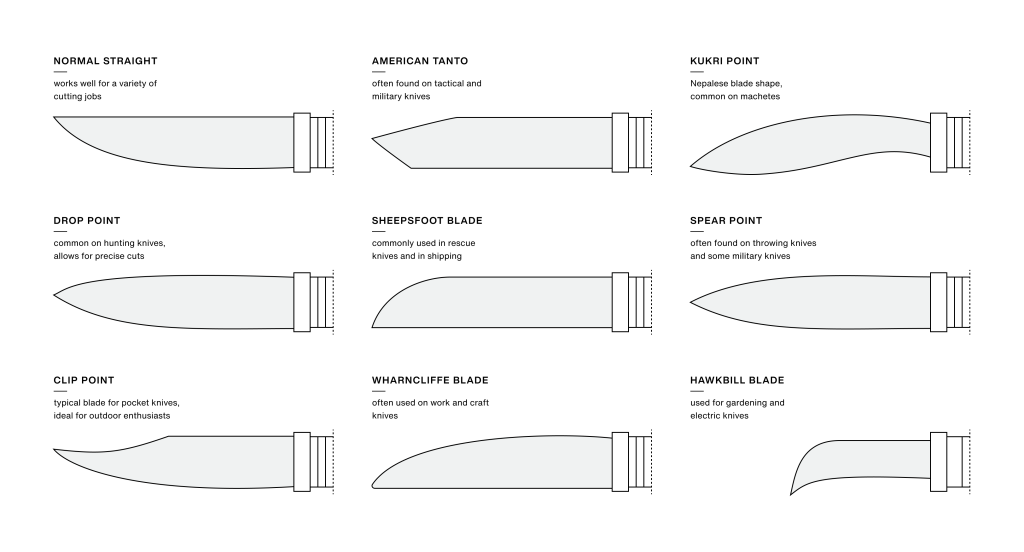
The blade shape of a knife determines its possibilities of use and cutting performance. Here are some of the most important blade shapes:
- Standard Blade: This blade features a slightly curved edge and a tapered tip, making it versatile for use. It is frequently utilized in chef’s knives and is suitable for both fine and coarse cutting tasks.
- Drop-Point Blade: This blade is characterized by a gently sloping tip, offering both strength and precision. It is commonly used in hunting and outdoor knives.
- Clip-Point Blade: This blade features a tapered, partially truncated tip and an upwardly curved spine. It is excellently suited for fine cutting tasks and is popular with pocket and folding knives.
- Tanto Blade: Originally from Japan, this blade has a distinctive straight edge and a sharp tip known for its penetrating power. It is often used in tactical and military knives.
- Wharncliffe Blade: This blade has a straight cutting edge and a gently sloping backline that results in a sturdy tip. It is commonly used in work and craft knives and provides excellent control and stability for precise work.
High-quality kitchen knives and how to recognize them
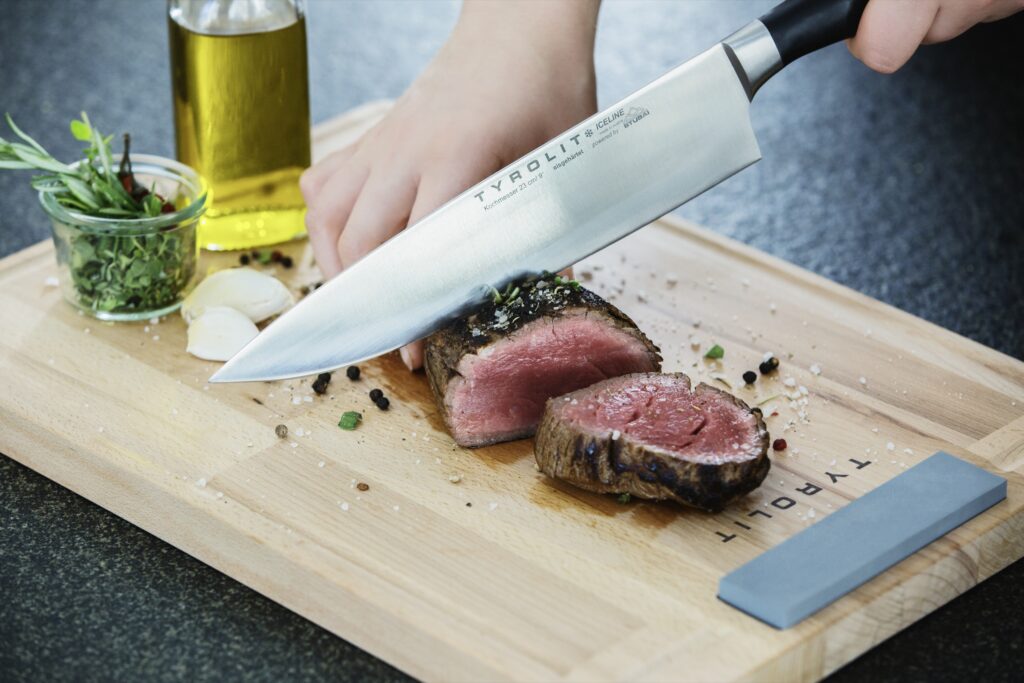
High-quality kitchen knives are characterized by several features – including the material of the blade. High-quality knives are often made of stainless steel, damask steel, or other high-quality alloys known for their sharpness and durability. A meticulous craftsmanship, where the blade is perfectly integrated into the handle without any visible gaps or irregularities, also indicates a high quality.
A continuous full tang is an indicator of a stable and balanced knife. The balance and weight of a knife are crucial factors for its handling and control. High-quality knives are well-balanced and fit comfortably in the hand, facilitating easier use.
The choice of handle material is just as crucial. Materials such as Micarta or high-quality plastics contribute to the durability and comfortable use of the knife. High-quality kitchen knives are also often equipped with ergonomically shaped handles, which reduce fatigue during prolonged cutting.
These aspects have also been considered for Tyrolit Life kitchen knives: The knives are designed for low-fatigue use, fit comfortably in the hand, and are especially long-lasting due to the use of high-quality materials. Moreover, the meticulous craftsmanship ensures a harmonious blend of functionality and aesthetics.
Kitchen Knife by Tyrolit Life
Tyrolit Life offers a wide range of high-quality kitchen knives that impress with their excellent workmanship and outstanding materials.
The Iceline knife series utilizes high-quality 1.4116 stainless steel, which undergoes multiple ice-hardening processes to achieve a hardness of 56 HRC. These knives are exceptionally edge-retaining and provide an outstanding balance between flexibility and hardness.
The Darkline knife series features high-end stainless chrome steel, enriched with special alloy additives to achieve a hardness of 60 HRC. These knives are celebrated for their extreme sharpness and longevity, and they also stand out with their distinct appearance. The collection is enhanced by practical accessory products such as knife sharpeners with a preset sharpening angle, cutting boards, and knife blocks with an integrated whetstone. These accessories ensure optimal maintenance and storage of the knives, as well as aid in properly sharpening kitchen knives. With Tyrolit Life, you receive not only premium kitchen knives but also the appropriate accessories for enduring service life and consistently perfect cutting performance.
FAQs
What is an Erl?
What is a tang in a knife?
What is a knife without handle scales called?

